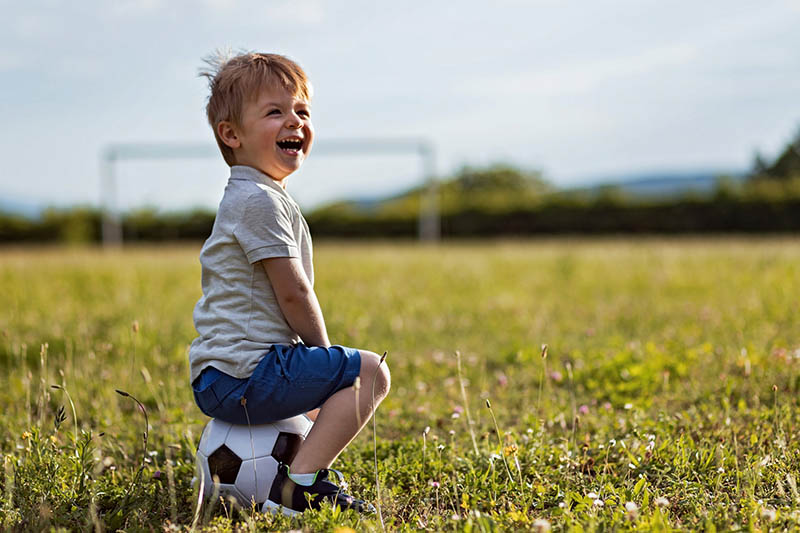Scoliosis is a common condition affecting the spine, particularly in children and adolescents. As your child grows, it’s essential to be aware of signs and symptoms of scoliosis, especially since early detection plays a vital role in effective treatment. In this blog, we will explore when your child should be checked for scoliosis, the signs to watch for, and the importance of early diagnosis.
What is Scoliosis and How Does it Develop?
Scoliosis is a medical condition characterized by an abnormal sideways curvature of the spine. While a healthy spine should appear straight when viewed from the back, scoliosis causes the spine to curve into an “S” or “C” shape. There are different types of scoliosis, including adolescent idiopathic scoliosis (the most common), congenital scoliosis, and neuromuscular scoliosis.
The exact cause of scoliosis is still unclear, but it is often linked to genetic factors, spinal injuries, or developmental issues. Scoliosis commonly develops during periods of rapid growth, particularly in the pre-teen or early teenage years, which is why it is often diagnosed during adolescence. Early intervention is essential to prevent the condition from worsening, potentially leading to pain, discomfort, and even impaired lung function in severe cases.
Early Signs and Symptoms of Scoliosis in Children
As a parent, it can be difficult to spot scoliosis since many cases have minimal or no noticeable symptoms. However, there are several early signs of scoliosis that you should keep an eye out for:
- Uneven Shoulders or Hips: One shoulder or hip may appear higher than the other.
- Asymmetrical Waist: The waistline may appear uneven, and one leg might look longer than the other.
- Limited Spinal Flexibility: A child may complain of back stiffness or have trouble bending over.
- Abnormal Gait: Scoliosis can cause your child to lean to one side while walking.
- Rib Cage Protrusion: The rib cage may jut out more on one side, creating an uneven appearance.
If you notice any of these signs of scoliosis, it’s essential to seek a professional evaluation as soon as possible.
Recommended Age for Scoliosis Screening
While scoliosis can develop at any age, it is most commonly diagnosed in children and adolescents, particularly during the growth spurt that occurs just before puberty. Experts recommend that children should be screened for scoliosis around the ages of 10 to 12, especially during school physicals.
Schools often conduct scoliosis screenings for children in middle school, which is an excellent opportunity for early detection. However, if any abnormalities are noted, it’s crucial to follow up with an orthopedic specialist or pediatric orthopedic surgeon for a more thorough evaluation.
The Importance of Early Detection and Diagnosis
Early detection of scoliosis is critical for managing the condition and preventing it from worsening. When scoliosis is caught early, it is easier to monitor and treat with non-surgical options such as bracing. If left untreated, scoliosis can progress and lead to severe spinal curvature, causing discomfort, difficulty breathing, and a significant reduction in quality of life.
At The Pediatric Orthopedic Center, we emphasize the importance of early detection and offer advanced diagnostic tools like the EOSedge Imaging System, which reduces radiation exposure while providing detailed images of the spine. This cutting-edge technology helps us evaluate the degree of curvature and design the best treatment plan for each child.
What to Expect During a Scoliosis Check-Up
If your child is being screened for scoliosis, the process typically includes a physical examination followed by imaging tests if necessary. During the exam, a pediatric orthopedic surgeon or orthopedic specialist will look for any signs of scoliosis, such as uneven shoulders, hips, or rib cage protrusion.
A forward bend test is often performed, where your child will bend forward at the waist while the doctor observes the spine. This helps the physician assess the spinal curvature and determine if further testing is needed. Additionally, a scoliometer may be used to measure the degree of trunk rotation. This tool provides an estimate of the spinal curvature and can help the physician decide whether further diagnostic imaging, such as X-rays, is needed.
In some cases, imaging such as X-rays may be required to get a detailed view of the spine’s curvature. At The Pediatric Orthopedic Center, we use the EOSedge Imaging System, which provides high-quality images while minimizing radiation exposure—important for children who may need frequent imaging.
Request an Appointment
If you notice any signs of scoliosis in your child or if you’re concerned about their spine, don’t wait to take action. Early detection and intervention are key to managing scoliosis effectively.
Our expert team at The Pediatric Orthopedic Center, including renowned pediatric orthopedic surgeons Dr. Mark Rieger and Dr. Sarah Stelma, is here to provide the best care for your child’s spine. We offer comprehensive services, from initial screening to advanced treatment options such as bracing and, when necessary, surgery.
Request an appointment or call us at 973-538-7700 today to ensure your child receives the most advanced scoliosis care. Thank you for choosing The Pediatric Orthopedic Center to care for your child’s spine. We are here to help with expert care and a commitment to early detection and treatment for scoliosis.





